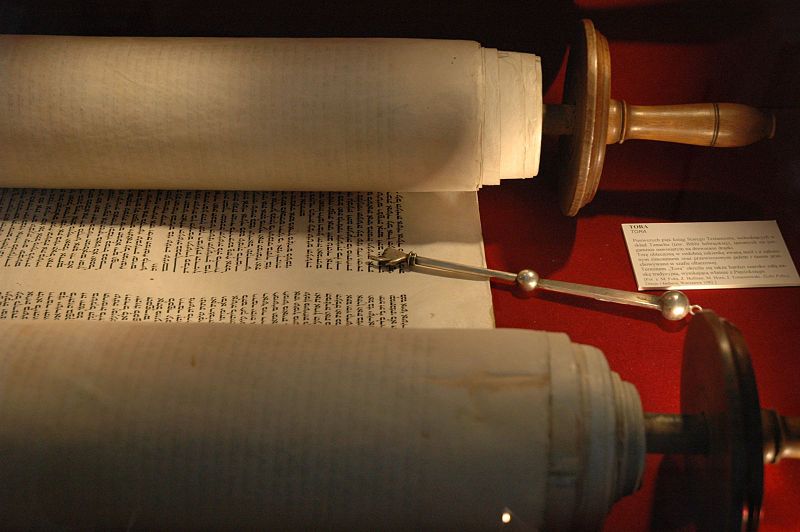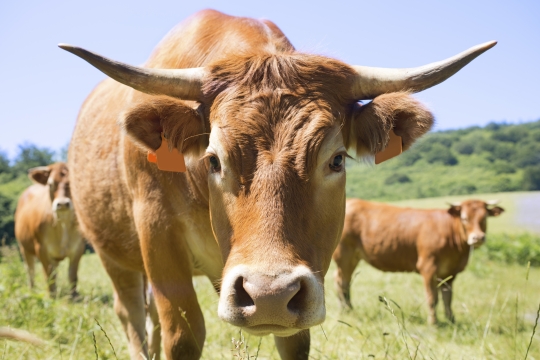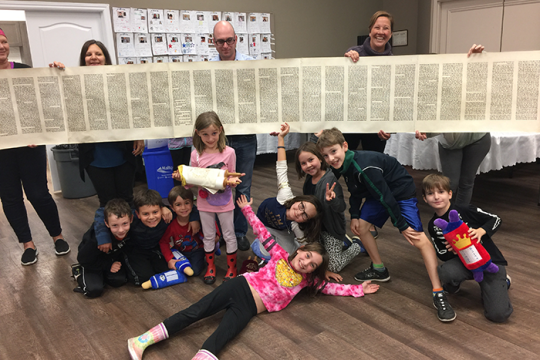
In this Scroll is the secret of our people's life from Sinai until now. Its teaching is love and justice, goodness and hope. Freedom is its gift to all who treasure it.
– Mishkan T'filah, the Torah Service
Our tradition tells us that once they were freed from slavery, the Hebrews became restless. On Mt. Sinai, Moses spoke to God and asked for guidance. There, the people received the Torah, God's instruction.
Since antiquity, the Hebrew word "Torah" has been used to describe many forms of instruction within Judaism, both written and oral. The most common use refers to the Five Books of Moses: Genesis, Exodus, Leviticus, Numbers, and Deuteronomy. These books describe our people's earliest myths and traditions – from the Creation story, to the life of the Prophet Moses. By this instruction, our people's understanding of themselves and the world has developed through centuries.
Each year, on the festival of Shavuot, Jews around the world gather to commemorate the mythic anniversary of our receiving Torah. Shavuot customs include a prayer service, the eating of dairy (tradition says the Torah is like milk and honey to us), and the Tikkun Leil Shavuot, an all-night Torah study session. In pointing back to the ancient wisdom that has sustained our people, the festival encourages us to acknowledge the distinctiveness of Jewish life and culture.
For Reform Jews, the Torah has become a symbol of the broader Jewish legacy of learning. The question "Did God write our Torah?" is less important than the question "What does our Torah teach us?"
So, in light of Shavuot, what does our Torah teach us?
Inspired by the words of the Prophet Isaiah, Reform leaders have always encouraged us to learn from, and alongside, those outside our numbers. As active participants in a wider world, Reform Jews are taught to value our Jewish identities while appreciating the many cultures and ideas outside our own. That means our Torah, and our experience of it, has been shaped by what we learn in the process. Part of the distinctiveness of Reform Judaism is its openness – both historically and today – to others.
But how does this Reform perspective on the Torah color Shavuot, a holiday that, at least in part, asks us to remember Jewish distinctiveness?
Reform temples often serve as places of worship and learning for interfaith families, visitors, and all who come in peace. Many are first exposed to Judaism through the efforts of the Reform movement to increase wider Jewish literacy and tolerance in our culture. This openness is sacred to us, as the Prophet Isaiah wrote, "For My House shall be called a house of prayer for all peoples" (Isaiah 56:7).
In Reform congregations, we will gather to celebrate the festival of Shavuot. Present will be the full patchwork of Reform life – our families, both Jewish and interfaith; our welcome visitors, many of whom may be learning of Shavuot for the first time; and our leaders, who've dedicated their lives to the study and teaching of Torah. Together, we will celebrate the distinct heritage of the Jewish people without entertaining notions of superiority to other cultures.
In this way, Shavuot also provides an opportunity to celebrate the influential voices of those not in the Jewish community, who shape our perception and interpretation of Torah each time we return to it. If the secret of our people's life since Sinai is found in our Torah, then may we return each year with new insights inspired by those around us – both "within" and "without" our Jewish communities.
May it continue to give freedom to all who treasure it.



